Carnival Glass Knife
$75.00This knife features a beautiful blade of multicolored “carnival” glass set into a handle made of western juniper. Free shipping within the U.S.
Showing all 8 results
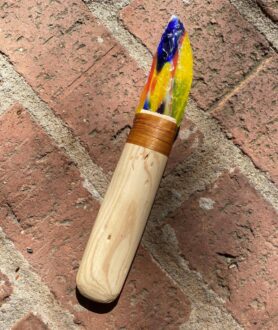
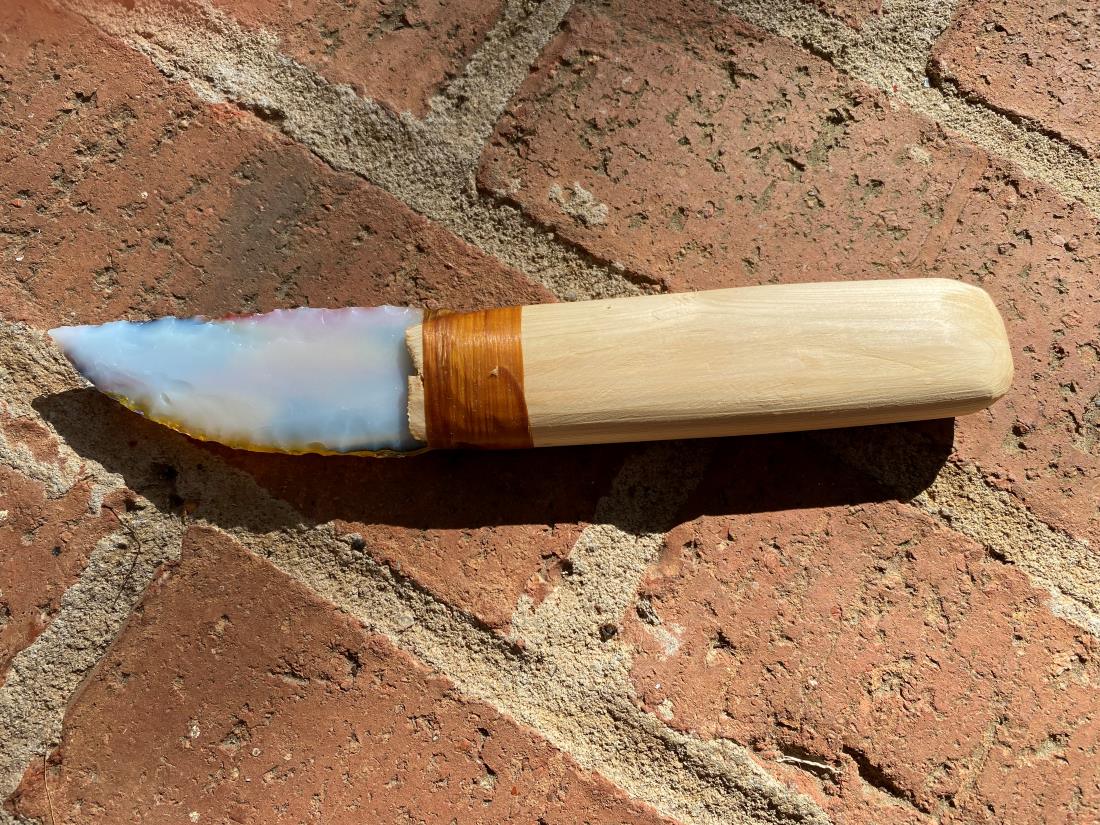
This knife features a beautiful blade of multicolored “carnival” glass set into a handle made of western juniper. Free shipping within the U.S.
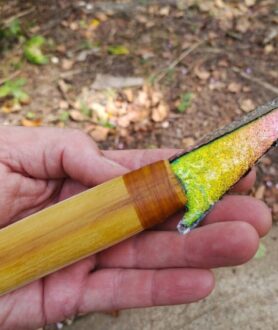
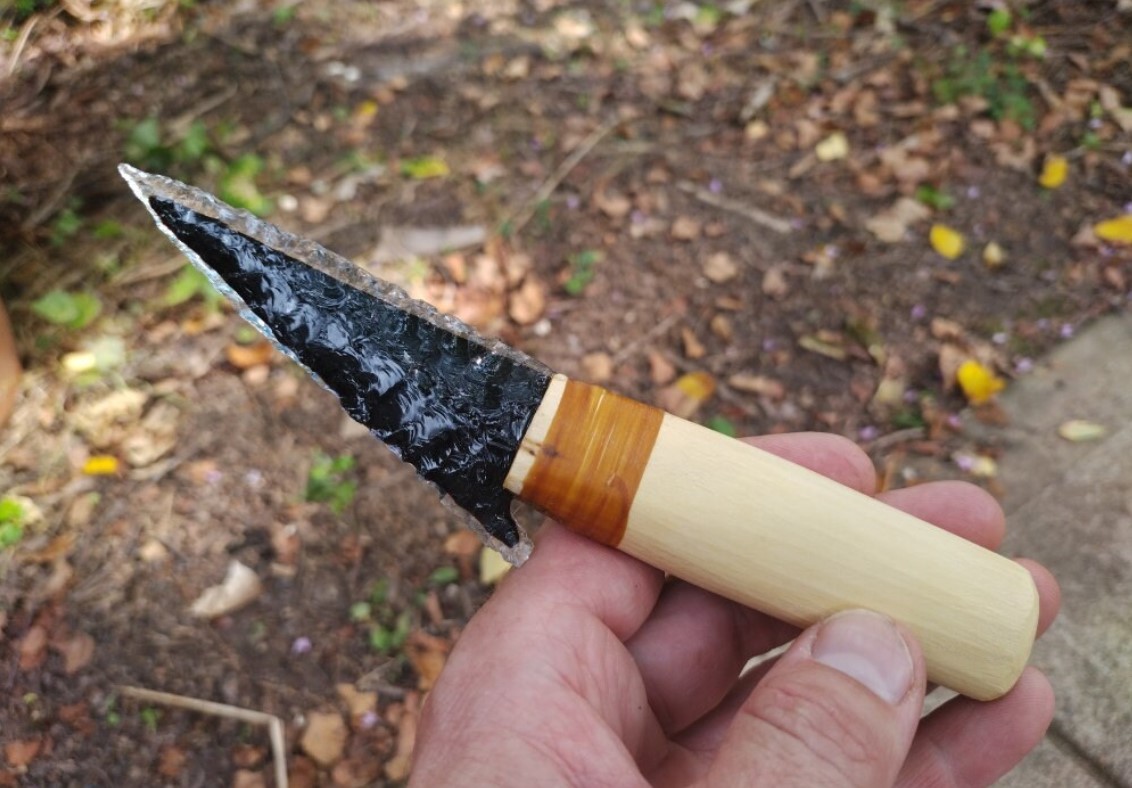
This beautiful knife sports a blade of dichroic glass set in a handle of Osage orange. The color in the knife is a greenish gold at the very base and gradually changes color to gold, then copper gold, then magenta as you go towards the tip. The other side of the blade is black glass with a thin perimeter of clear glass. The osage orange handle has yellow heartwood on one side and the white sapwood showing on the other side. Total length of the knife is 7 1/4 inches long.
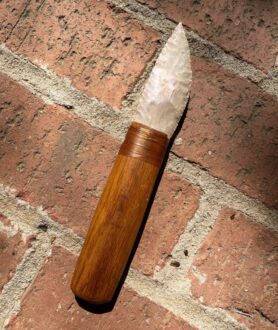
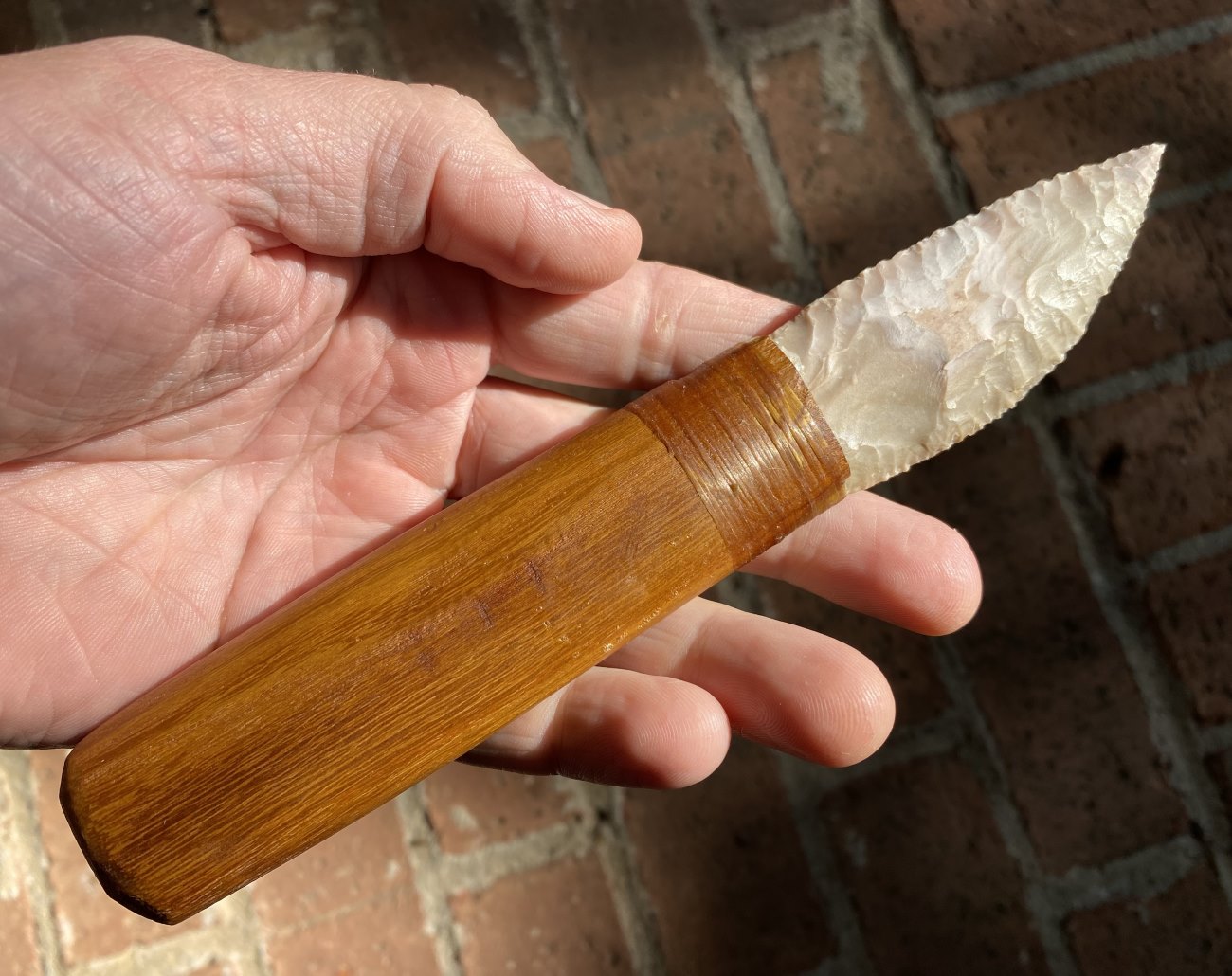
This blade features a blade of Texas flint set into a handle of osage orange. It has finely serrated edges that are unsurpassed for skinning deer and other large game. 7 3/4 inches total length.
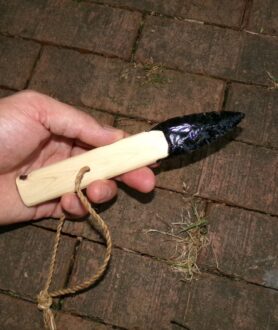
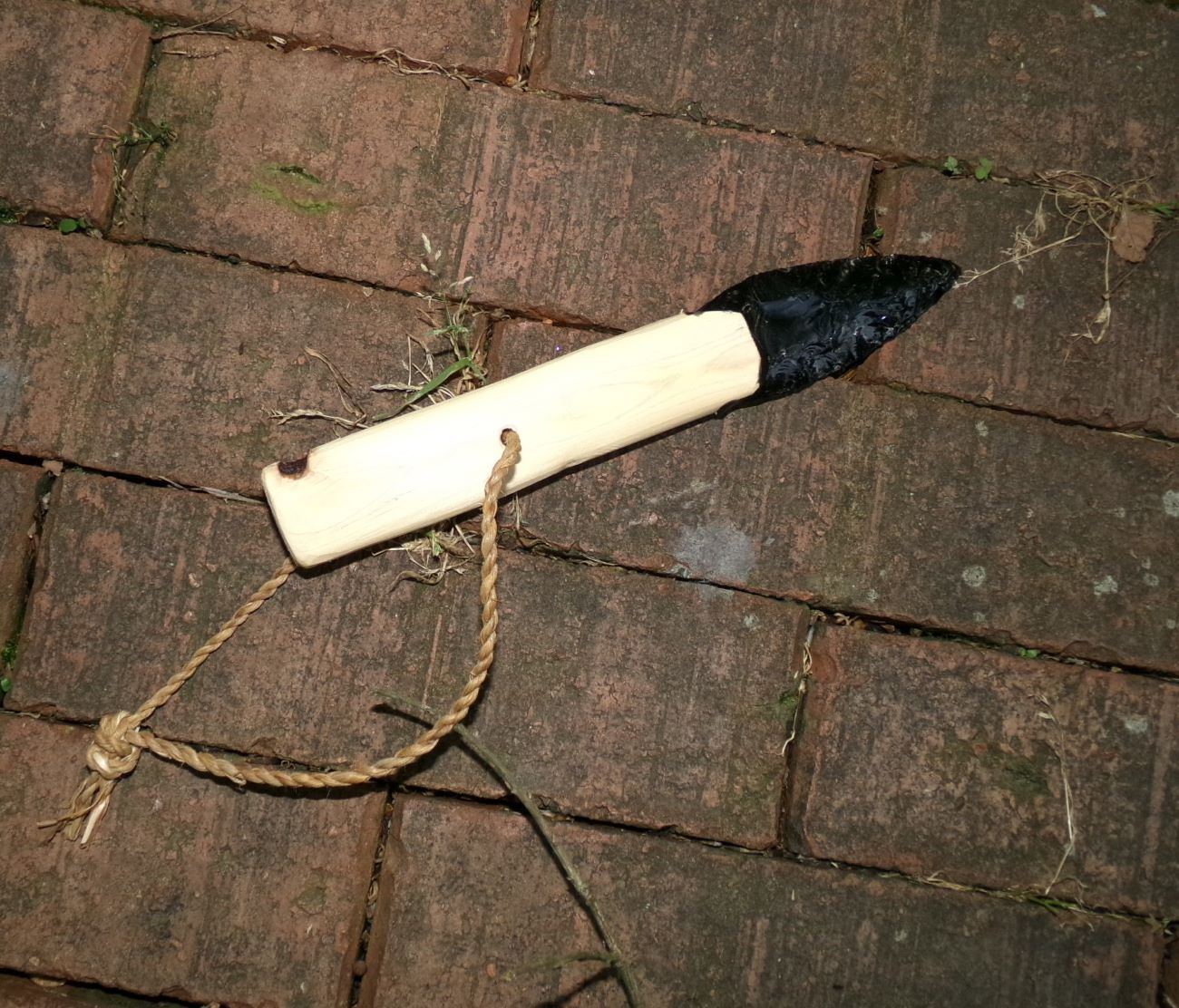
This obsidian knife is a museum-quality copy of prehistoric knives that have been found in Great Basin caves, one of which was found in a rockshelter in north-central Oregon near the Umpqua River. Identical knives (from the Basketmaker culture) were also used in the Four Corners regions of the Southwestern desert approx 1000 year ago. This knife has a black obsidian blade set into a handle of desert juniper. A hole is drilled in the center of the handle and through the hole is a cord made of hand twisted poplar bark that’s been tied to create a loop. This allows your hand to slip through the loop and the knife dangles from your wrist like a bracelet. This ingenious design keeps the knife ready for use…with a quick flip of the wrist the knife is instantly in your palm where the knife is grasped for use. It also prevents the knife from being dropped and breaking the fragile blade. This is a fully functional knife that is unmatched for skinning large game like deer and elk. 7 1/4-inches total length. Free shipping within the U.S.
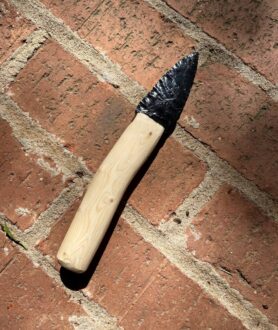
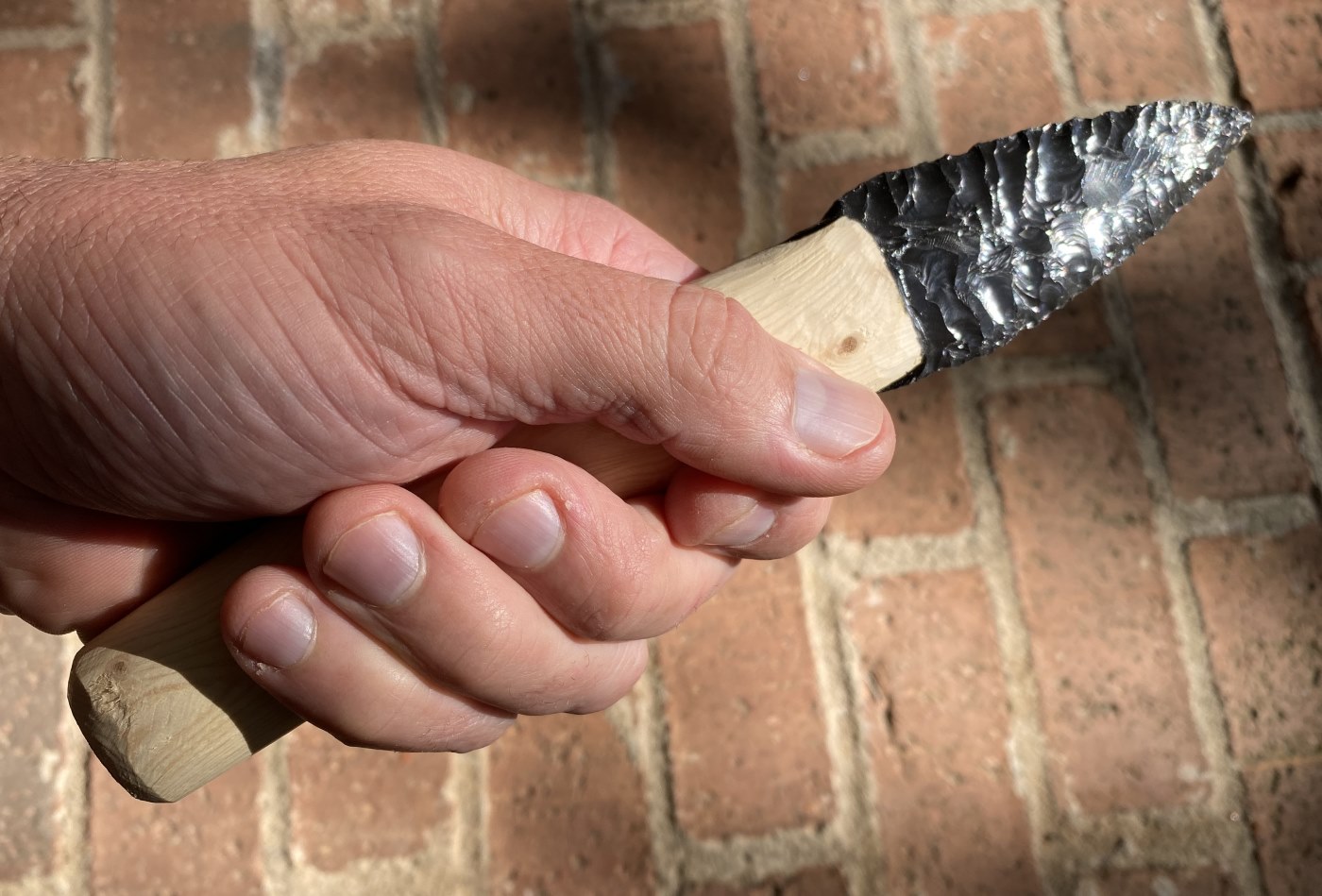
This replica Northern Paiute knife copies authentic prehistoric knives found in caves and rockshelters in the high deserts of the Great Basin of the western U.S. This knife has a blade of opaque black obsidian set into a handle of western juniper. It’s set in place with epoxy that’s been colored to look like the black pine pitch glue that firmly held the authentic knives of the Northern Paiute. Now, I could have set the blade in with real pitch glue and it’s usually not a problem, but let’s say the postman delivered the knife to your front door and it sat in the hot sun for several hours, the blade could heat up enough that it would soften the pine pitch and the blade could, possibly fall out. I’ve never had that issue, but it happened to a friend of mine, so I decided to use black colored epoxy to secure the blade just to be safe. So here you go…a perfectly functional obsidian knife that’s right out of the prehistoric past. This knife is perfect for skinning large game like deer and elk.
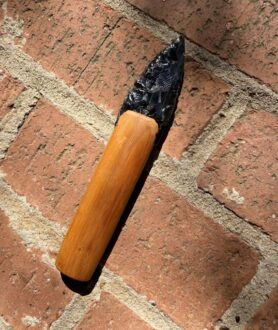
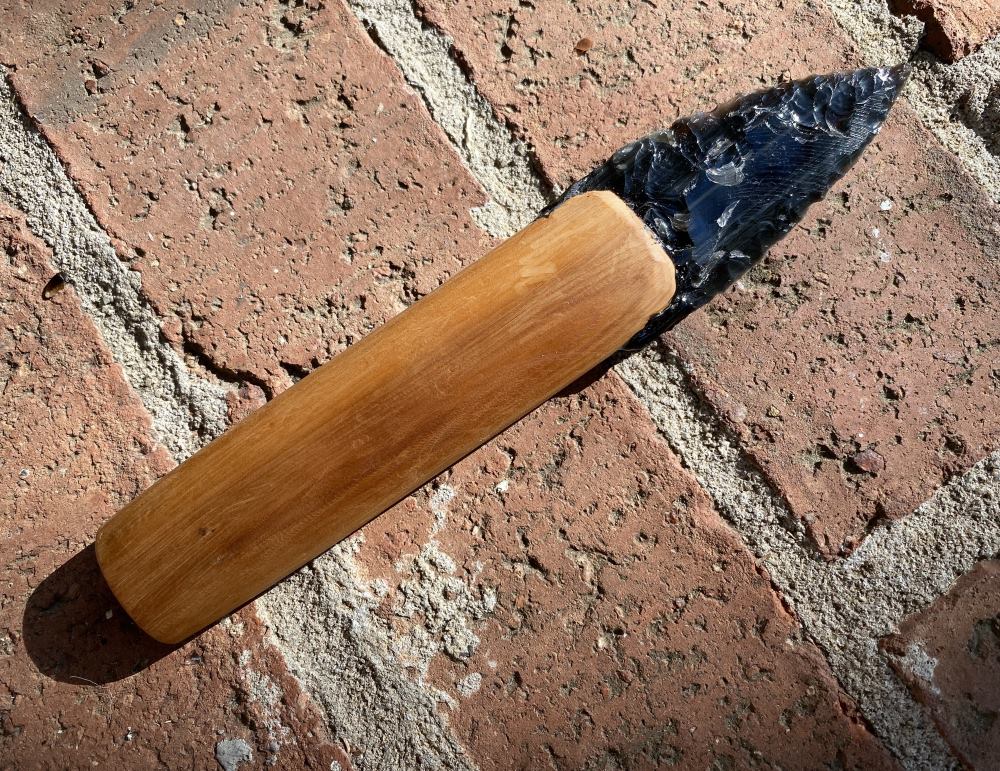
This obsidian knife is based on authentic Hupa Indian knives from Northern California. This knife has an obsidian blade set into a handle of Pacific yew. The handle has both the lighter sapwood and darker heartwood. That has significance since the Hupa also made their exquisite paddle bows from Pacific yew. The rounded shape of the knife blade works perfectly with the natural pivot of our wrists to maximize the efficiency of the knife’s ability to remove the skin from large game like deer. Total length of knife is 7 1/4 inches long. Free shipping to all US customers.
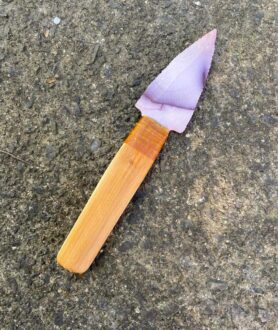
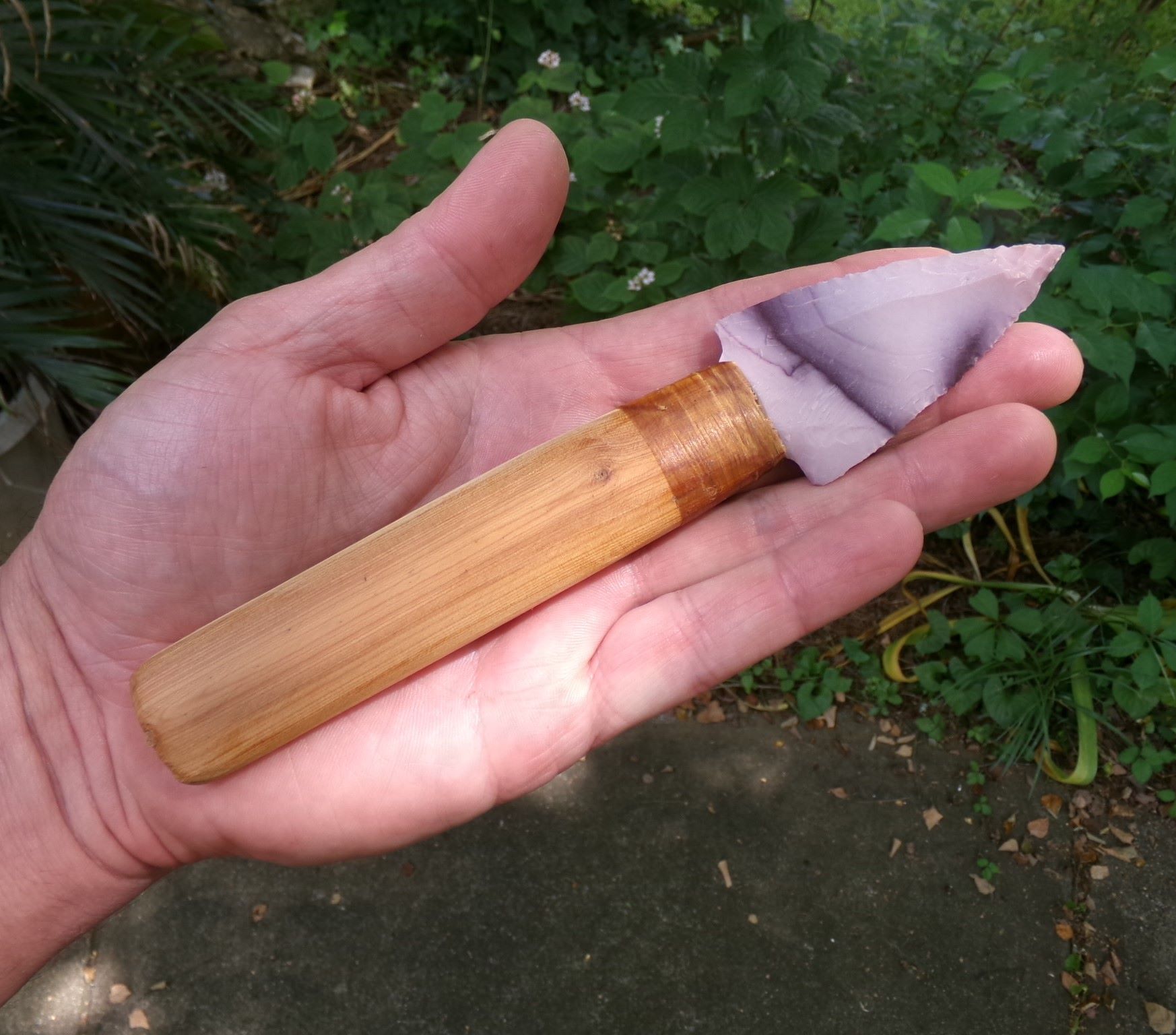
This pretty stone knife has a handle of Pacific yew and a blade with a pale lavender colored stone blade made of Mookaite jasper from Australia. The blade has a light lavender color with a band of darker purple that carries across the blade. The handle/blade junction is wrapped with artificial sinew. 7 3/4″ total length. Free shipping to all U.S. customers.
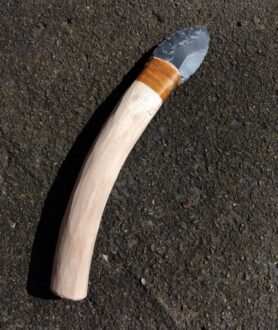

This simple but effective stone skinning knife has a short, rounded blade of dacite that’s ergonomically designed to capitalize on the natural pivot of your wrist to maximize the knife’s effectiveness. The handle is made from a piece of crepe myrtle, a dense and durable white wood.
When using this knife, your initial incisions will need to be made with a sharp steel knife (these would have been made with razor sharp stone flakes in prehistory). Once those incisions are made, that’s where this hafted stone knife comes in. The sharp, serrated edge is ideal for separating the connective tissue between the skin and carcass of the animal. But it’s not so sharp that it will slice the skin, making it the fastest and most efficient way to skin a medium or large sized animal while maintaining the integrity of the the hide. The rounded blade shape works perfectly with the natural pivot of your wrist to maximize the cutting ability of the knife. Free shipping.
No products in the cart.